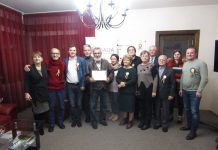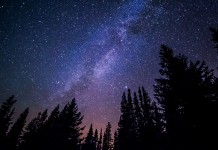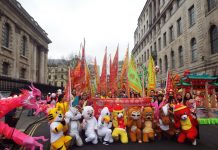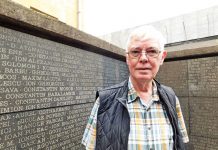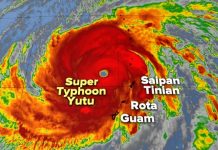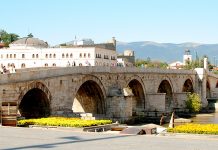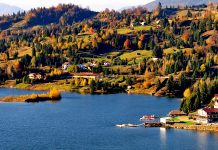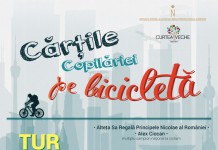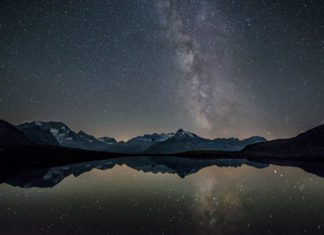 Christmas means snow, cold, presents, the Tree, good food and family gatherings. I decided to spend an atypical Christmas by taking a trip to Bolivia and stay five days in an indigenous community far into the jungles of Beni region. After doing my research online and in Barnes and Nobles, I decided the best place to go would be Rurrenabaque, a lovely little village 200 miles north east of La Paz, in the Amazon basin.
Christmas means snow, cold, presents, the Tree, good food and family gatherings. I decided to spend an atypical Christmas by taking a trip to Bolivia and stay five days in an indigenous community far into the jungles of Beni region. After doing my research online and in Barnes and Nobles, I decided the best place to go would be Rurrenabaque, a lovely little village 200 miles north east of La Paz, in the Amazon basin.
Getting to Rurrenabaque is in itself an adventure. This village can be reached by land, on the The Most Dangerous Road in the World (or “Death Road” for short), a 20 hour horrifying bus ride in an old and colorful bus. The other option is by plane. I chose the latter. The Amazonas airline flies its 18-seat passenger planes (smaller than a bus) to Rurrenabaque, where the airport looks like a soccer field cleared in the middle of the jungle. If the busses travel on the Death Road in any weather conditions, airplanes are limited by daylight (there are no lights on the green ecological organic “runaway”, and at the tropics 6.30 is pitch black outside), and weather: mist and rain (a common occurrence in the jungle). My flight was delayed for 6 hours due to heavy rain. Not only the rain had to stop, but also the landing strip (the grass) had to dry.
There are two main paved streets full of tiendas (selling clothes, hammocks, raincoats) and almost as many travel agencies. The town heavily relies on tourism and seems that half of the locals are either tour guides or work in one form or another for the travel industry. Rurre flourished as a travel destination after a young Israelite tourist ventured in the wild jungles outside Rurre, got lost, miraculously survived in the merciless jungle for 27 days. The Israeli was rescued by a local, he was featured on “I Shouldn’t Be Alive” show and wrote a book (“Jungle: A Harrowing True Story of Survival” by Yossi Ghinsberg) that appealed to the young. Soon after, Rurre was full of Israeli young guns looking for crazy jungle adventures, trying to re-enact the survival days of their compatriot.
After two days of inquiries, I finally found a guide, Melvin, who was willing to offer the tour I was looking for. It was already December 23rd. I had no time to waste. I went with Melvin and his wife Christmas shopping in the Rurrenabaque local market which consisted of mounds of merchandise spread on the banks of Beni river. After ransacking through piles of clothes, we selected 2 bags that we would take to the community. Then we headed for the general store where we got powdered milk and cocoa, and lots of biscuits. Next day at sunrise, the gifts and rucksacks were loaded in the wooden boat. Melvin sat in the back, started the 15 horse power engine and off we went.
Rurrenabaque remained a colored dot in the immense green of the jungle. Ahead of us was the wide, bloated, brown Beni river. We sailed up the river through breathtaking scenery. The jungle was crawling from the water and as far as the eye could see, up a range of mountains – a rugged green horizon, the EKG line of nature’s heartbeat. The silence was interrupted occasionally by macaws flying above us in pairs, or a bunch of quarreling green parrots. Every now and then I could peek beyond the green curtain of vegetation and get a glimpse of a thatched roof, sign that somebody was living there. We soon caught up with an indigenous boat, a peke-peke (wooden carved canoe with a peke-peke engine, making peke-peke noise, hence the name). The peke-peke was loaded with 20 people, adults and children, and many heavy sacks filled with food. Melvin greeted the locals, they were from a Moseten community, Charque. Seeing the sun-stroke kids, the youngest one being only 2 weeks old, we decided to load the youngest ones and their moms into our boat to give them a ride to Charque, we would get there faster that the peke-peke. The Moseten invited us in their community, and I accepted happily.
We dropped anchor on a muddy shore, where a few Moseten appeared from the shore shrubbery. We had arrived in Charque. A man, more at ease with outsiders, greeted us and welcomed us in his community. My hosts led me through the shade of the jungle for about five minutes, to a small wooden shack. This empty room furnished with one wooden bench and dirt floor was going to be my home for the next 5 days. Melvin installed the mosquito nets above the ground were we were going to sleep (yes, I slept on the floor), then boiled water from the river to boil and cooked the first meal in the jungle: pasta with ketchup and mayo.
Charque is a very small human settlement in the middle of the jungle, 5 or 6 thatched roof huts and maybe 30 people, more than half children, made up the whole community. The houses were scattered around the jungle and it took a few minutes to walk from one house to the other. The community had a lot of cultivated land where it grew rice, corn, yucca, tomatoes, onion, papaya, cocoa. The staple food of the community and of all indigenous communities in the jungle is chicha, a fermented drink made from pureed yucca root or corn.
Evening came early, at 6.30, and we were invited to the house of our neighbor, just behind a patch of forest in front of our hut. It was Noche Buena, the night before Christmas. We entered the modest house. Five men were seated at a wooden table, chattering and sipping something from a cup. I was invited to the table. The only lit place in the room was a small wooden shelf where a nativity scene, very modest but beautiful through its poverty and simplicity was set. Little Jesus was sleeping in a crib, Mary and Joseph on the side, and a young shepherd was sitting nearby. The small chipped statues were surrounded by fresh jungle flowers and plants carefully tied in bouquets. Above, a silver star was hanging. The whole scene was lit by a half burned white candle. I thought for a second at the lush decorations set up in Manhattan stores months before Christmas, bright, colorful, immense nativity scenes and Santa Clauses, all that glitter and glamour we display. A world apart, in the rainforest, people were still marking this holiday. Stripped of all lights and colors, I felt this was a more real and true Christmas.
When my eyes got used to the darkness, I distinguished the contours of three women, seated on a floor mat, close to the table, tending to their babies. The oldest lady, a beautiful grandma wearing a long red dress, with candid face brazed with deep wrinkles, and very long white fairytale hair approached our table and placed a cup of chicha in front of me. The men raised their cups: “Che’ha! This means Salud! In our language”. “Noroc!” I said, raising the cup. We started talking about our cultures, our voices dissipating in the silence of the jungle. Outside, the moon was rising above the forest, illuminating the tops of the tallest trees which now looked like black clouds against the golden face of the moon. “Nine thirty” said one of the men. “The moon always comes up at this time”. The conversation went on, while the grandmother in red dress was silently filling our cups with more chicha. I was surprised at the curiosity of the Moseten, they were asking so many things about Romania. In exchange, they were offering glimpses of their life in the jungle. The babies were asleep, their mothers gently rocking them in their hammocks. The moon was shining on the clear sky, sending silver beams in our hut. It felt I was back in time 2000 years, it really felt that on this night, in similar surroundings, Jesus was born.
The next morning I woke up and started preparing the hot chocolate. I brought water from the river. The muddy Beni water already looked like hot chocolate. Melvin lit a fire, put the aluminum cauldron on the fire, then added the powdered milk and cocoa. We poured the biscuits in two buckets and arranged everything in the middle of our hut. The children came one by one, shyly stepping inside and sitting next to the walls. They all had brought a cup with them. We served them one by one, and then we all sat and ate breakfast together. Because it was Christmas morning, the children also received a small gift: the clothes we brought with us from Rurrenabaque. The children and their parents were so excited, almost everybody disappeared with their present in a house or behind a bush and appeared dressed in the new outfit. Santa Claus is unheard of in the jungle, and he never really makes it there. A family invited us for more celebration in their hut. We were served again chichi. To my surprise, one of the men pulled out an old dusty tape player, a gift from a tourist that visited them a long time ago. He put inside an equally bad looking tape, pressed start and cumbia rhythms filled the shack. Two Mosetens started to dance, wobbling from one leg to the other, spinning and bending the knees. I joined. After twirling and jumping two songs in a row, I wanted to sit down and sip more chicha. The villagers were not done dancing so we all boogied some more to the delight of the whole village who was watching and laughing and bobbing their heads to the music. This dance performance ended my most unusual Christmas celebration.









